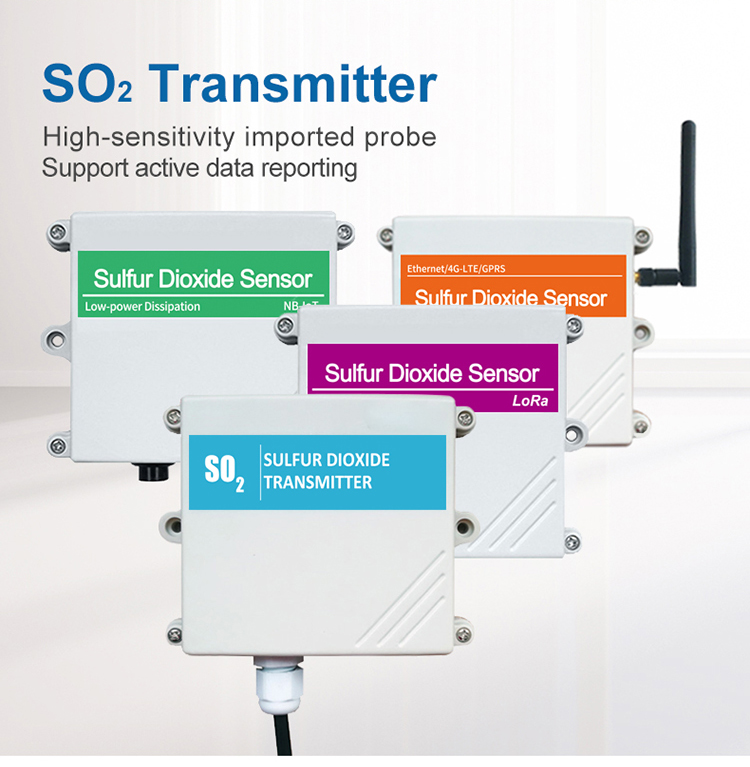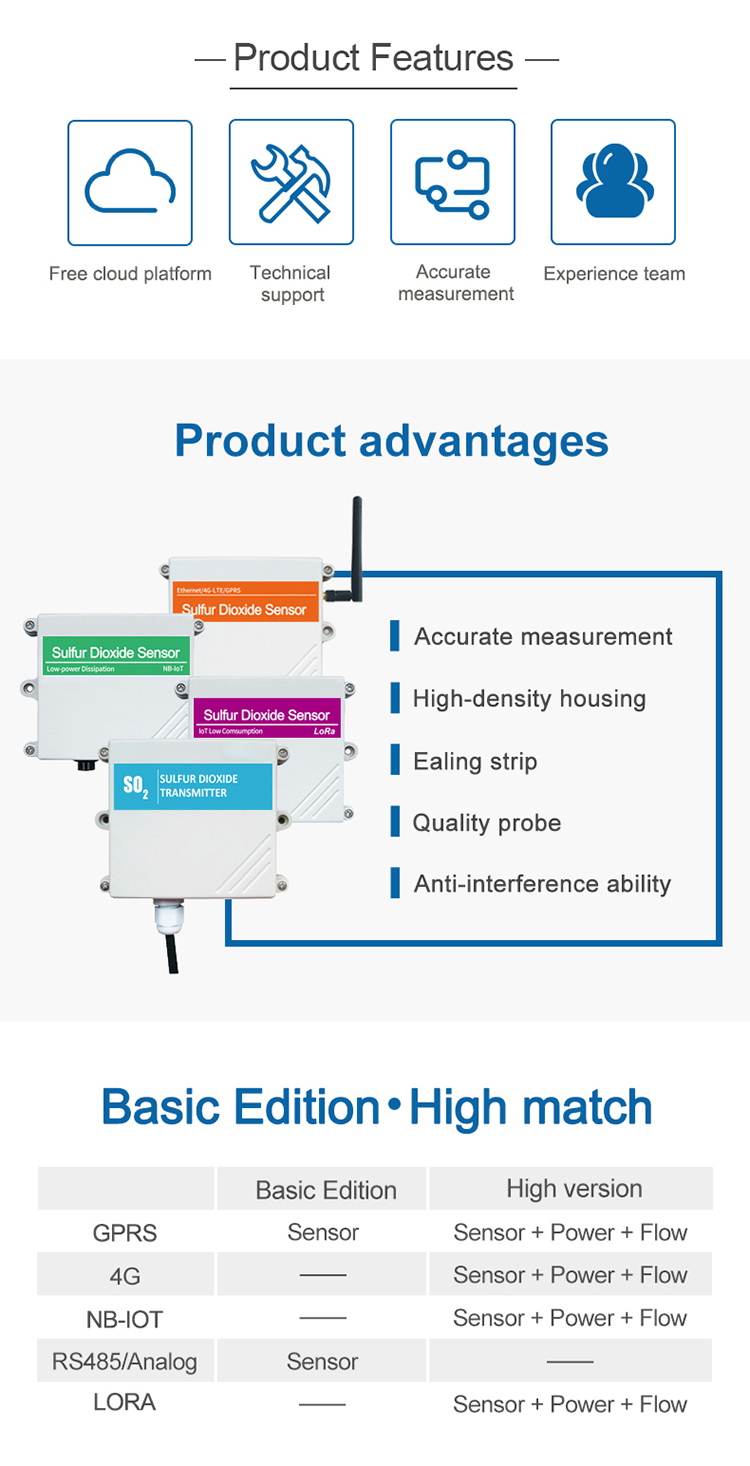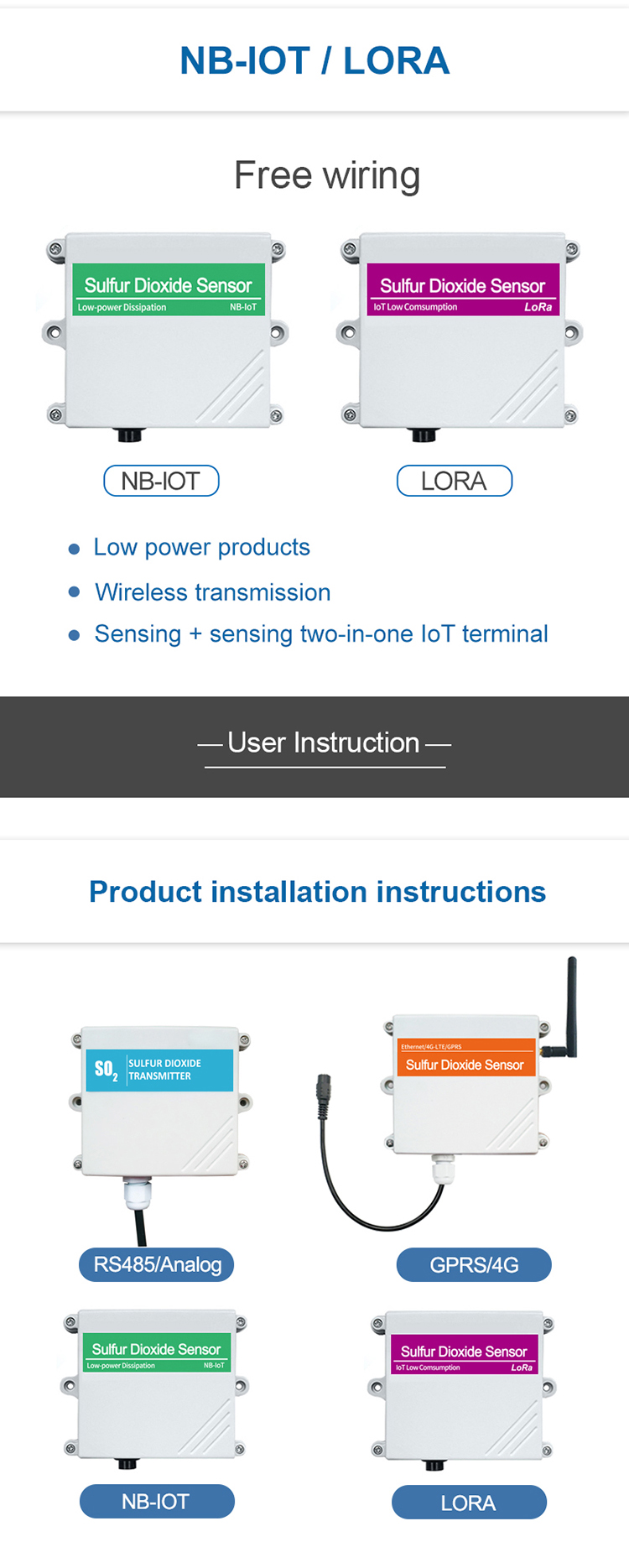SO2 Gas Sensor
To ensure effective management of SO2 levels, advancements in SO2 gas sensor technology have been instrumental. This article explores the latest innovations in SO2 gas sensors and their impact on enhancing environmental safety.

Importance of SO2 Gas Monitoring:
Sulfur dioxide is a primary contributor to air pollution and has detrimental effects on both human health and the environment. It is known to cause respiratory issues, such as asthma and bronchitis, and can also lead to acid rain formation and ecosystem damage. Monitoring SO2 levels is essential for identifying pollution sources, assessing air quality, and implementing necessary control measures.
Traditional SO2 Monitoring Methods:
Historically, SO2 monitoring involved time-consuming and expensive laboratory-based techniques, such as colorimetric methods or ion chromatography. These methods limited real-time data collection and made it challenging to identify immediate air pollution events. Additionally, these techniques were not suitable for widespread deployment, hampering effective monitoring efforts.
Advancements in SO2 Gas Sensor Technology:
Recent advancements in SO2 gas sensor technology have revolutionized air quality monitoring. These innovative sensors offer numerous benefits, including:

a. Miniaturization: Miniature SO2 gas sensors allow for easy integration into portable monitoring devices and wearable technologies. This enables personal exposure monitoring and real-time tracking of SO2 levels in different environments.
b. High Sensitivity: Advanced sensors have significantly improved sensitivity, allowing for accurate detection of even trace amounts of SO2. This ensures precise monitoring and early warning systems for potential air pollution incidents.
c. Selectivity and Interference Rejection: Modern SO2 gas sensors are designed to be highly selective towards SO2 molecules, reducing the chances of false alarms or misinterpretation. Additionally, these sensors can effectively reject interference from other gases commonly found in the atmosphere, enhancing measurement accuracy.
d. Rapid Response Time: The response time of SO2 gas sensors has significantly reduced. They can now provide real-time data and near-instantaneous alerts in the event of sudden spikes in SO2 levels, enabling quick intervention and mitigation measures.
Integration with IoT and Data Analytics:

SO2 gas sensor can be integrated with the Internet of Things (IoT) platforms, enabling seamless remote monitoring and data collection. This integration facilitates the creation of comprehensive air quality networks and enhances data analysis capabilities. By leveraging data analytics techniques, patterns and trends in SO2 levels can be identified, aiding in pollution source identification and effective policy-making.
Conclusion:
SO2 gas sensor innovations have transformed the landscape of air quality monitoring and management. These advancements offer greater accuracy, improved sensitivity, and real-time data availability, facilitating timely intervention and pollution control measures. With the continued development of SO2 gas sensors and their integration into IoT platforms, the potential for enhanced environmental safety and sustainable living is promising. By leveraging these technological advancements, we can collectively work towards a cleaner and healthier future for all.